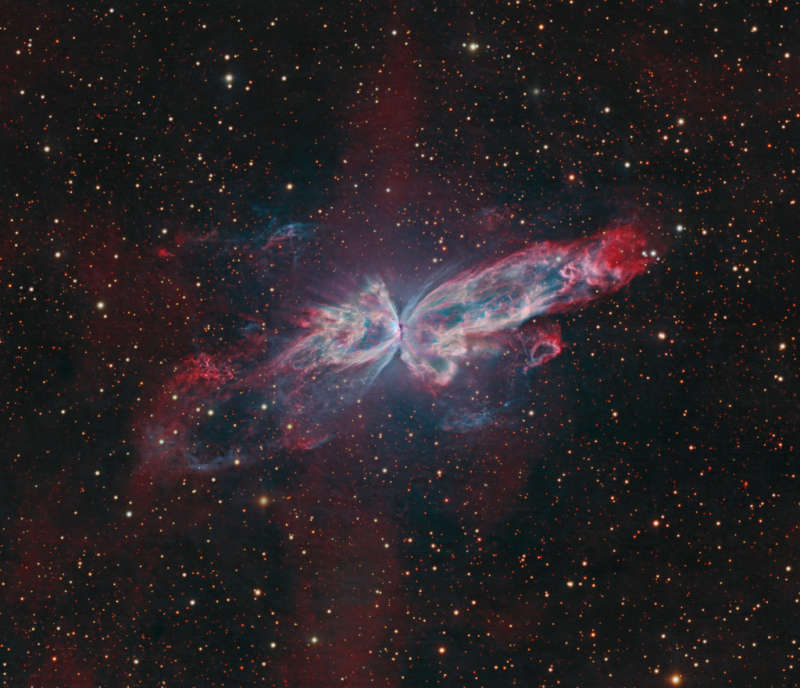Credit & Copyright: Mike Selby
Explanation:
The bright clusters and nebulae of planet Earth's night sky are often
given the names of flowers or
insects, and its whopping 3 light-year wingspan,
NGC 6302
is no exception.
With an estimated surface temperature of about 250,000 degrees
C,
the central star of the
planetary nebula
is transforming into a white dwarf star,
becoming exceptionally hot,
and shining brightly in ultraviolet light.
The central star is hidden from direct view
by a torus of dust, but its energetic ultraviolet light
ionizes atoms in the nebula.
In
this sharp, telescopic
view composed with narrowband image data,
the ionized hydrogen and doubly ionized oxygen atoms
are shown in their characteristic red and blue-green hues
to reveal a stunning complex of
knots and filaments
within the nebula's wing-like bipolar outflows.
NGC 6302
lies about 4,000 light-years away in the
arachnologically correct constellation of the Scorpion
(Scorpius).
1999 2000 2001 2002 2003 2004 2005 2006 2007 2008 2009 2010 2011 2012 2013 2014 2015 2016 2017 2018 2019 2020 2021 2022 2023 2024 2025 |
Yanvar' Fevral' Mart Aprel' Mai Iyun' Iyul' Avgust Sentyabr' Oktyabr' Noyabr' Dekabr' |
NASA Web Site Statements, Warnings, and Disclaimers
NASA Official: Jay Norris. Specific rights apply.
A service of: LHEA at NASA / GSFC
& Michigan Tech. U.
|
Publikacii s klyuchevymi slovami:
butterfly nebula - tumannost' Babochka
Publikacii so slovami: butterfly nebula - tumannost' Babochka | |
Sm. takzhe:
Vse publikacii na tu zhe temu >> | |
